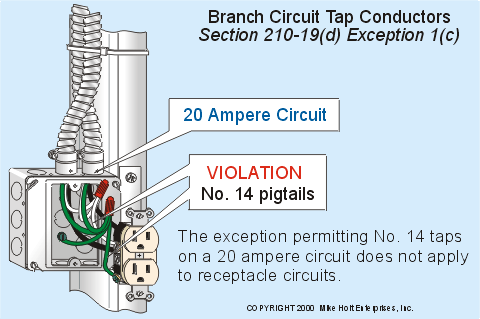kwired
Electron manager
- Location
- NE Nebraska
- Occupation
- EC
Since the switch is only rated for 15A, then why not allow the switch leg to be #14AWG.
Maybe the NEC should require receptacles to be 20A and lighting circuits to be 15A, and you can't mix them.
But wait, that is design and not related to safety, and we all know the NEC should not be used as a design guide.:rotflmao:
But the switch is located inside a box where additional heating effects should they happen are hopefully contained within the box. The conductors may be part of a cable such as NM cable that has virtually no separation between the conductor and other objects and run near or in contact with combustible materials, like wood framing members, cellulose insulation, etc.


